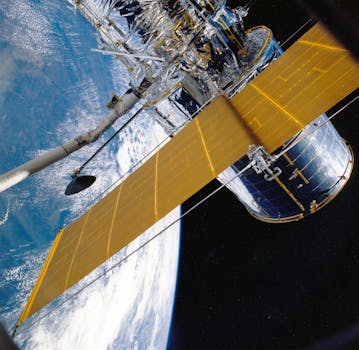
Satellite Telecommunications: The Future is Now
Satellite telecommunications has come a long way since its inception, and the future is looking brighter than ever. With the latest cutting-edge innovations, the industry is experiencing a significant transformation, enabling faster, more reliable, and more secure communication globally. In this article, we will delve into the world of satellite telecommunications, exploring the current state of the industry, the latest advancements, and what the future holds.
Satellite Telecommunications: A Brief Overview
Satellite telecommunications refers to the use of satellites to transmit and receive data, voice, and video signals. The industry has been around for decades, with the first commercial satellite launch in 1962. Since then, satellite telecommunications has become an essential part of modern communication, providing connectivity to remote and underserved areas, supporting global navigation, and enabling international communication. The industry has experienced significant growth over the years, with the global satellite telecommunications market expected to reach $7.5 billion by 2025.
Cutting-Edge Innovations in Satellite Telecommunications
Several cutting-edge innovations are driving the growth and transformation of the satellite telecommunications industry. Some of the key advancements include the development of high-throughput satellites (HTS), which offer faster data speeds and greater connectivity. HTS satellites use advanced technologies such as spot beams and frequency reuse to increase capacity and reduce costs. Another significant innovation is the introduction of low-Earth orbit (LEO) satellites, which operate at lower altitudes, reducing latency and increasing connectivity. LEO satellites are also more cost-effective and offer greater flexibility than traditional geostationary satellites.
Artificial Intelligence (AI) and Machine Learning (ML) in Satellite Telecommunications
Artificial intelligence (AI) and machine learning (ML) are also playing a crucial role in the transformation of the satellite telecommunications industry. AI and ML algorithms can analyze vast amounts of data, optimizing network performance, predicting maintenance needs, and improving cybersecurity. AI-powered systems can also automate many tasks, reducing the need for human intervention and improving overall efficiency. Furthermore, AI and ML can help optimize satellite constellation management, enabling more efficient use of resources and improved connectivity.
The Impact of 5G on Satellite Telecommunications
The introduction of 5G networks is also having a significant impact on the satellite telecommunications industry. 5G networks require greater bandwidth and lower latency, making satellite communications an attractive solution. Satellite telecommunications can provide the necessary connectivity to support 5G networks, particularly in areas where terrestrial infrastructure is limited. The integration of satellite and 5G technologies is expected to enable a wide range of new applications, including extended reality, autonomous vehicles, and smart cities.
Conclusion
In conclusion, the future of satellite telecommunications is here, and it is more exciting than ever. With cutting-edge innovations such as high-throughput satellites, low-Earth orbit satellites, AI, and ML, the industry is experiencing a significant transformation. The impact of 5G on satellite telecommunications is also expected to drive growth and innovation, enabling new applications and use cases. As the industry continues to evolve, we can expect to see even more exciting developments, further revolutionizing the way we communicate and connect with each other.





